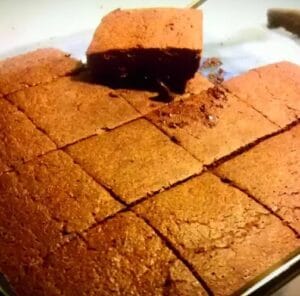When preparing brownies, the liquid you choose to mix with your batter can significantly impact the taste and texture. One common question is, “Is it better to use milk or water in brownies?” Both options have their advantages, but understanding their effects can help you make the best choice for your recipe. This guide explores the differences, benefits, and ideal situations for using milk or water in brownie recipes.
1. The Role of Liquid in Brownie Batter
Liquid is a vital component of brownie batter, as it hydrates the dry ingredients and binds everything together. The choice of liquid—whether milk or water in brownies—can affect the final product’s taste and texture.
What Liquid Does:
- Activates leavening agents like baking powder.
- Hydrates flour and cocoa powder to create a cohesive batter.
- Impacts the flavor and richness of the brownies.
Choosing between milk or water determines whether your brownies lean toward a light, simple flavor or a creamy, indulgent one.
2. Benefits of Using Water in Brownies
Water is the most common liquid used in brownie recipes due to its simplicity and accessibility. While it may seem basic, water has its merits.
Advantages of Using Water:
- Neutral Flavor: Allows the cocoa flavor to stand out without interference.
- Low Cost: Readily available and doesn’t add to the recipe’s expense.
- Consistency: Provides the correct texture without altering the batter.
For those who prefer a classic, straightforward brownie, water is a reliable choice. However, there are times when milk might be a better option.
3. Benefits of Using Milk in Brownies
Using milk in brownies enhances both flavor and texture. Its natural fats and sugars bring richness to the batter that water cannot replicate.
Advantages of Using Milk:
- Richer Flavor: Adds a creamy, slightly sweet taste that complements chocolate.
- Moist Texture: Milk’s fat content helps create a fudgier, more tender crumb.
- Enhanced Appearance: Brownies made with milk often have a shinier crust.
If you’re aiming for indulgent, bakery-style brownies, milk is an excellent choice over water.
4. Comparing Milk and Water in Brownie Recipes
To decide whether to use milk or water in brownies, it helps to compare their effects side by side.
Comparison Table:
| Aspect | Water | Milk |
|---|---|---|
| Flavor | Neutral | Rich, creamy |
| Texture | Light, slightly chewy | Moist, tender, fudgy |
| Crust | Basic | Shinier and more appealing |
| Suitability | Traditional recipes | Gourmet, bakery-style recipes |
By understanding these differences, you can tailor your brownies to your preferences.
5. When to Use Water in Brownies
There are situations where water might be the better choice for your brownies. Its simplicity makes it ideal for specific scenarios.
When Water Works Best:
- Classic Recipes: Traditional brownies that rely on cocoa for flavor.
- Budget-Friendly Baking: When cost and convenience are priorities.
- Dietary Restrictions: Suitable for those avoiding dairy.
Using water in brownies ensures a straightforward, classic dessert without added richness.
6. When to Use Milk in Brownies
For those seeking elevated flavors and textures, milk in brownies is often the way to go. Its creamy properties can enhance many recipes.
When Milk Works Best:
- Fudgy Brownies: Recipes that aim for a rich, moist texture.
- Layered or Frosted Desserts: Milk complements additional toppings like ganache or frosting.
- Special Occasions: Perfect for impressing guests with indulgent, bakery-style brownies.
Milk is ideal for recipes where richness and depth of flavor are priorities.
7. Substituting Milk for Water in Brownie Recipes
If your recipe calls for water but you’d like to use milk instead, it’s a simple substitution. However, there are some adjustments to consider.
How to Substitute Milk for Water:
- Match Quantities: Use the same amount of milk as the recipe specifies for water.
- Adjust Fat Content: Full-fat milk works best, but skim milk can be used for a lighter option.
- Monitor Baking Time: Brownies with milk may bake faster due to the added sugars and fats.
By substituting milk for water in brownies, you can instantly upgrade their flavor and texture.
8. Can You Use Non-Dairy Milk in Brownies?
For those avoiding dairy, non-dairy milk is a great alternative to both water and traditional milk. Options like almond, oat, or soy milk work well in brownie recipes.
Non-Dairy Options:
- Almond Milk: Adds a subtle nutty flavor.
- Oat Milk: Provides a creamy texture similar to dairy milk.
- Soy Milk: Neutral flavor and high protein content for structure.
Non-dairy milk allows you to enjoy the benefits of milk in brownies while accommodating dietary preferences.
9. Common Mistakes When Using Milk or Water
While the choice between milk or water in brownies is personal, there are a few common mistakes to avoid when making your decision.
Mistakes to Avoid:
- Overmixing Batter: Leads to tough, dense brownies.
- Using Too Much Milk: Can make the batter too runny, resulting in uneven baking.
- Not Adjusting Baking Time: Milk’s fat content can cause brownies to bake faster.
Avoiding these mistakes ensures your brownies turn out perfectly, regardless of the liquid you choose.
10. Which is Better: Milk or Water in Brownies?
Ultimately, whether milk or water in brownies is better depends on your personal preferences and the type of brownies you’re making.
Water is Best For:
- Light, classic brownies.
- Budget-friendly and simple recipes.
Milk is Best For:
- Fudgy, moist brownies with a rich flavor.
- Special occasions or gourmet-style recipes.
Is it Better to Use Milk or Water in Brownie Mix?
The debate over using milk or water in brownie mix is one that many bakers encounter. Both liquids have their advantages, but the choice largely depends on the texture and flavor you want to achieve. This guide explores the benefits of each option and offers tips to help you make the best decision for your brownies.
For more inspiration on enhancing brownies, check out Jazz Up Boxed Brownie Mix for creative ideas.
1. Why Choose Milk Over Water?
Milk is a popular choice because it enhances the richness and flavor of brownies. Here’s why it works:
Benefits of Milk:
- Creamier Texture: Milk adds fat, creating a denser, fudgier consistency.
- Enhanced Flavor: The natural sugars in milk boost the chocolate flavor.
- Golden Crust: Milk contributes to a more appealing golden-brown finish.
Learn how other substitutions, like using butter instead of oil, can impact your brownies by visiting Use Butter Instead of Oil in Ghirardelli Brownie.
2. Why Stick to Water?
Water is a convenient and calorie-free option, making it a go-to for quick and simple brownies.
Benefits of Water:
- Lighter Texture: Creates a softer, more cake-like brownie.
- Lower Calories: Keeps the recipe lighter compared to milk-based versions.
- Neutral Flavor: Doesn’t alter the original chocolate profile of the mix.
For tips on combining fruit with your brownies, explore Add Fruit to My Brownie Mix.
3. Best Situations for Milk or Water
The choice between milk and water often depends on the occasion and personal preference. Here’s a quick guide:
Use Milk When:
- You’re looking for a richer, indulgent dessert.
- Adding other creamy ingredients, such as cream cheese or whipped cream.
Use Water When:
- You prefer a lighter brownie.
- You’re following a low-calorie or dairy-free diet.
To explore other enhancements, check out The Spruce Eats: Creative Brownie Hacks.
4. Creative Substitutions for Milk and Water
If you’re feeling adventurous, consider experimenting with other liquids for unique flavors.
Substitutions to Try:
- Coffee: Enhances the chocolate flavor and adds depth.
- Buttermilk: Creates a tangy, tender texture.
- Coconut Milk: Adds a tropical twist and creamy consistency.
For expert tips on using extra eggs to modify texture, visit Adding an Extra Egg to Brownie Mix.
5. External Resources for Perfect Brownies
For more baking tips and inspiration, explore these high-quality resources:
- Serious Eats: Brownie Science: Learn how different ingredients affect brownie texture.
- AllRecipes: Milk vs. Water Baking: A detailed comparison of using milk or water in baking.
- Hershey’s Official Recipes: Discover unique brownie recipes using Hershey’s cocoa.
Conclusion
The choice between milk and water in brownie mix ultimately depends on the flavor and texture you’re aiming for. Milk provides a rich, indulgent result, while water keeps things light and simple. Experiment with different options to discover your perfect brownie recipe. For more tips and creative ideas, visit Rustle Recipes and elevate your baking game!

